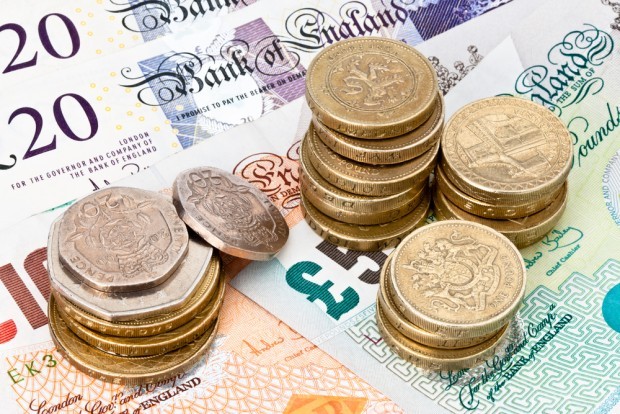Where should you invest a lump sum of money
Post on: 11 Июль, 2015 No Comment

If you’re lucky enough to find yourself with a lump sum of cash, don’t get too excited. If you blow the lot on a spending spree or foreign jaunt, you might regret it later. Whether your windfall is an inheritance, bonus or redundancy payout, you should put it to work by investing it for the future. One day it could be the deposit on your first home, a downpayment on a new car, or a valuable part of your pension. How you invest the money depends on personal factors how much savings and debt you already have, and the size of your windfall.
1,000
Although 1,000 isn’t riches, it will still come in handy, especially if you’re short of ready cash. The most efficient way to use the money is to clear any expensive short-term debt, such as a credit card, store card or overdraft, says Damien Fahy, founder of personal finance site Moneytothemasses.com. “If you’re paying an APR of around 18% on a credit card or 30% on an unauthorised overdraft, use the money to pay this down. This makes far more sense than leaving it in a savings account, where you will be lucky to get 1% or 2%.”
Target the most expensive debt first, after first checking that you won’t incur any early repayment penalties.
If you have any cash left, use the money to create a pot of savings for financial emergencies, such as sickness or a shock bill, Fahy says. “Everybody should have a rainy day fund worth at least three months’ pay. Keep this in an easy access account, so you can get your hands on it in a hurry.”
Use your annual cash Isa allowance, which allows you to save up to 15,000 this financial year without paying income tax on the interest. Currently BM Savings is offering an instant access cash Isa with a rate of 1.6%, including a 1.1% bonus for the first 12 months, while NS&I has a bonus-free Isa paying 1.5%.
5,000
A 5,000 windfall is unlikely to change your life, but it could go a long way to improving your finances. Again, start by clearing expensive debts. “If you owe 5,000 on a credit card with a 20% APR, clearing that will save you 1,000 a year in interest,” says Craig Palfrey at investment advice website Increaseyourpension.co.uk.
Once you have a rainy day fund, start saving for the future. If you are likely to need the money in the next five years, say for a house deposit, avoid the stock market and stick to the safety of cash.
If you have longer, consider putting the money in the stock market. It is more risky, but potentially more rewarding.
“Retirement may seem a long way off, but the younger you are when you start saving, the better,” Palfrey says.
If you are 25 and invest your 5,000 into a low-cost FTSE 100 index tracker that grows by an average 5% a year after inflation (close to its long-run average), it will be worth 35,200 by the time you reach age 65. If you’re 35, it would be worth 21,600 by age 65, assuming the same growth rates.
Among the tracker funds currently available with low charges are the Fidelity Index UK, which has an annual cost of 0.09%, and HSBC’s FTSE 100 index, which has an annual charge of 0.27%.
You can invest in stocks and shares tax-efficiently by using your Isa allowance. There are thousands of investment funds to choose from, and your money grows free of income tax and capital gains tax.
Alternatively, you could invest it in a personal pension, and claim valuable tax relief on your contribution, worth 20% for basic rate taxpayers and 40% for higher rate taxpayers.
Tax relief at 20% would instantly turn your 5,000 into 6,000, while 40% tax relief would turn it into 7,000.
Again, your money can grow free of tax in a pension, but you can’t touch it until you are at least age 55.
You may find that restrictive, but it does prevent you from raiding your long-term savings when you’re a bit short of cash.
Under reforms introduced by George Osborne from next April, you will be free to spend your pension on whatever you like at retirement.
If the 5,000 is part of a redundancy package, this could be the time to start out alone, Palfrey says. “Lots of people have started successful ventures with start-up capital of 5,000 or less. Build a thriving business and that lump sum could change your life. But be prepared for a lot of hard work.”

10,000
Again, the same rules apply with a 10,000 windfall: clear expensive debts and build savings. Then put the money to work. Take a close look at your personal finances, says Darius McDermott, managing director of Chelsea Financial Services. “If you have any upcoming life event, such as buying a home, getting married or taking further education, this money could prove invaluable.”
The stock market offers the best chance of protecting your wealth from inflation, McDermott says. “The longer you are investing for, the more risks you can afford to take, because you have greater time to recoup any early losses.”
Don’t start by investing your 10,000 into a single company even if you’re convinced it’s got great prospects. Even apparently rock solid companies like Tesco are dangerous. If you have bought shares in it one year ago, you would have lost more than half your money.
McDermott says: “Spread your money across a range of assets, including cash, shares, bonds, commodities and property.” You can buy Isa funds or set up a self-invested personal pension (Sipp) cheaply and easily through low-cost brokers such as Alliance Trust, Bestinvest, Cavendish Online, Chelsea Financial Services, Fidelity FundsNetwork and Hargreaves Lansdown.
100,000
If you’re lucky enough to have a six-figure sum, you need to think seriously about the tax implications. Start by putting the maximum 15,000 inside this year’s Isa allowance. If you trust your partner with 15,000, you can make use of their allowance as well, instantly protecting 30,000 of your windfall from the taxman.
You can also claim valuable tax benefits by shifting some of the money into a personal pension. You can save up to 40,000 in a pension this financial year, or the equivalent of 100% of your earnings, whichever is lower, so if you earn 35,000, that’s how much of the windfall you can contribute to your pension. But you only have to pay in 28,000, as HM Revenue & Customs will automatically add 20% basic rate tax relief of 7,000.
You may be able to contribute even more by using unused annual pensions allowance from recent years, says Patrick Connolly, certified financial planner at Chase de Vere. “You can invest all of your windfall tax-efficiently using your Isa and pensions allowances.”
With 100,000 in your coffers, you need to take investing seriously, Connolly says. “Invest for the long term, spread your risk, stay calm in the face of market volatility, and diversify your portfolio.” At this level you will probably want to take advice on where to put your money. You can find a local adviser on Unbiased.co.uk .














